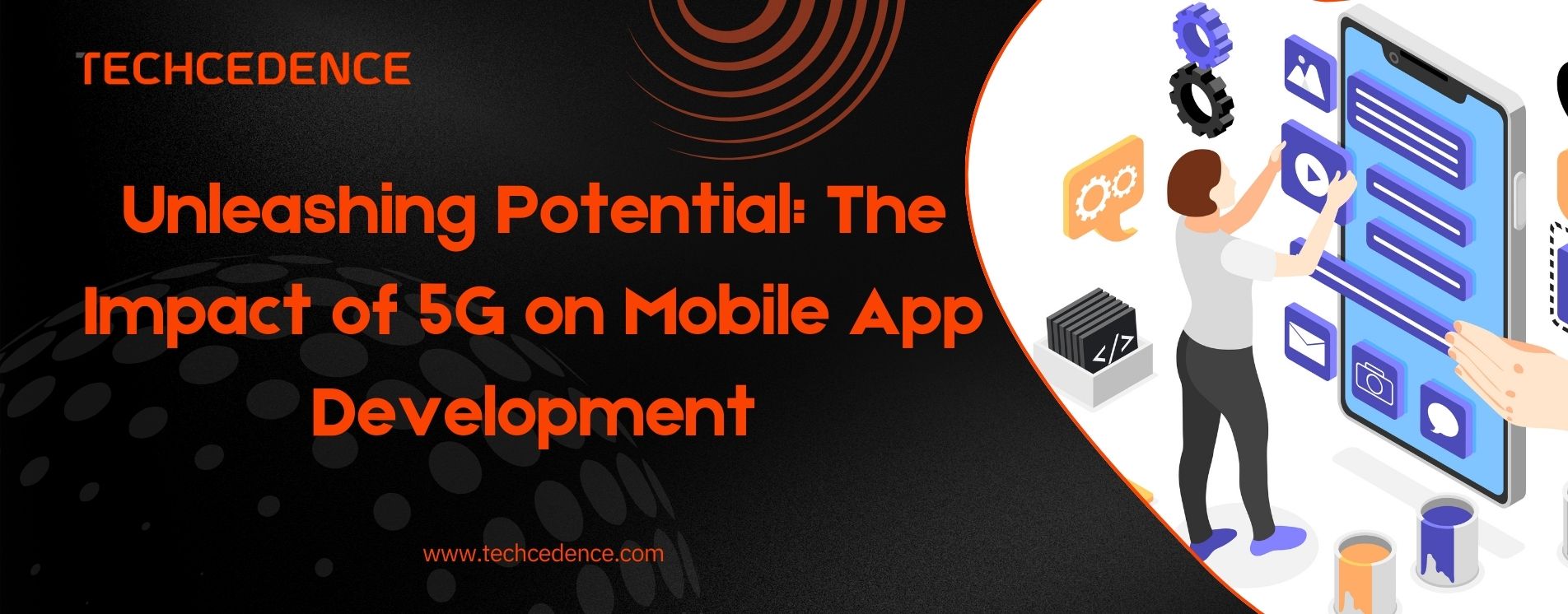
Categories : Uncategorized
Author : vivekkumarp Date : Sep 23, 2024
The emergence of 5G-enabled mobile applications has transformed user experiences in today’s world. 5G has taken a major leap from its predecessor 4G. This holds high potential, especially in mobile application development, where the demand for speed, low latency, and impressive user experience is always increasing. The evolution of 5G mobile applications has brought in a new world that changes how users interact with technology.
5G represents the fifth-generation wireless network, which is designed to provide faster data speeds, ultra-low latency, and increased connectivity. Unlike the previous generations of wireless technology, which primarily focused on improving the download speeds. 5G is built to handle complex applications that handle vast amounts of data while ensuring instantaneous communication. Its advanced infrastructure supports technologies like the Internet of Things (IoT), Augmented reality (AR), and Virtual reality (VR), making it an unavoidable one.
The 5G network operates using higher-frequency radio waves allowing it to transmit data at much faster rates. This is made possible through its reliance on small cell networks, which are distributed more densely than traditional cell towers. These small cells reduce the distance data travel, thus lowering latency and improving speed.
Mobile applications, traditionally limited by network bandwidth and speed, are seeing a substantial change with 5G’s capabilities. One of the most significant advantages is the improvement in app performance. Faster speeds enable users to download and upload large files without delay, creating a smoother and more efficient experience. Moreover, 5G has opened doors for new types of applications that require real-time processing, such as immersive Augmented and virtual reality environments, cloud-based gaming, and real-time AI-powered tools.
Additionally, with 5G’s capacity to connect millions of devices simultaneously, mobile apps can now support a more diverse range of services and integrate with various IoT devices seamlessly. This offers developers the opportunity to create interconnected ecosystems where data is shared across devices, enhancing the overall user experience.
To fully utilize 5G’s capabilities, mobile apps are being designed to handle high-speed data transfer and minimal delays. Developers must consider factors such as meteredness, which refers to how data usage is monitored and managed. As 5G connections allow for much larger data transfer, app developers will need to optimize their apps to ensure efficient data usage without overwhelming users’ data plans.
5G detection is another critical aspect of how the technology works. Mobile apps will need to detect the availability of 5G networks in real time and adjust their performance accordingly. This means that applications must be able to seamlessly switch between different network types (4G, 5G) without disrupting the user experience.
In addition to meteredness and detection, bandwidth estimation becomes crucial in a 5G environment. Bandwidth estimation refers to an app’s ability to determine how much data can be transmitted over a network at any given time. With 5G, this estimation needs to be more accurate to make full use of the available bandwidth. Apps must be designed to dynamically adjust the quality of service, such as video resolution or audio quality, based on the current bandwidth conditions.
5G has redefined the way mobile applications are built, deployed, and experienced. One key impact is on the architecture of mobile apps. Traditional architectures that rely heavily on server-side processing may evolve toward edge computing models. With edge computing, data processing can happen closer to the user, at the network edge, reducing latency and improving real-time application performance.
Another area that has seen a transformation is app design. With 5G’s ability to handle more complex functionalities and larger data sets, developers will be less constrained by the limitations that come with slower network speeds. This has encouraged the development of more feature-rich, data-intensive applications that can run without compromising performance.
Moreover, 5G has enhanced the user interfaces up to its maximum limits, which were difficult earlier. With the capability to handle high-definition video streaming, real-time augmented and virtual reality, and seamless live interactions, user interfaces will become more dynamic and interactive. The result is a far more immersive and engaging experience, allowing apps to respond almost instantly to user inputs.
From a security perspective, 5G’s improved network reliability also strengthens mobile app security. Faster data encryption and transmission mean sensitive information can be handled more securely, which is especially important for apps that process financial transactions or personal data. Developers are building applications based on these improvements, ensuring that mobile applications are robust enough to leverage 5G’s enhanced security features.
Finally, the scalability of mobile applications has increased with 5G. As the network supports more devices simultaneously, apps that cater to a large number of users will operate more efficiently. This is crucial for applications that depend on a high volume of concurrent users, such as social media platforms, live streaming services, and online gaming.